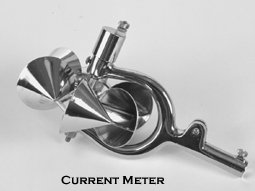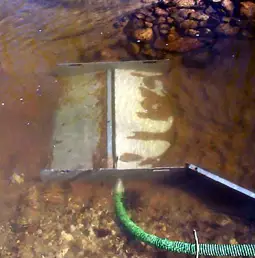Measuring water quality refers to the physical, chemical and biological characteristics of water. Much of our testing relates to drinking water, safety of human contact and for the health of ecosystems. The vast majority of surface water on the planet is neither potable nor toxic. This is true even if sea water in the oceans (which is too salty to drink) isn’t counted.
Another general perception of water quality is that of a simple property that tells whether water is polluted or not. In fact, water quality is a very complex subject, in part because water is a complex medium intrinsically tied to the ecology of the Earth. Industrial pollution is a major cause of water pollution, as well as runoff from agricultural areas, urban storm water runoff and discharge of untreated sewage (especially in developing countries).
As the climate changes the hydrology of regions will also change dramatically, impacted upon both quality and quantity of available water. Common water quality parameters to be measured and recorded by hydrologists include temperature , conductivity or specific conductance, dissolved oxygen, pH, turbidity (suspended matter), salinity, biochemical oxygen demand as well as total dissolved solids and its specific components such as sulfates, nitrates, calcium, etc.  River flows or Stream Gauging measures the amount of water flowing in an open channel which can range from a trickle in a ditch to a flood on the Amazon River. The U.S. Geological Survey (USGS) makes most stream flow measurements by current meter. A current meter is an instrument used to measure the velocity of flowing water. The principle of operation is based on the proportionality between the velocity of the water and the resulting angular velocity of the meter rotor. By placing a current meter at a point in a stream and counting the number of revolutions of the rotor during a measured interval of time, the velocity of water at that point is determined.
River flows or Stream Gauging measures the amount of water flowing in an open channel which can range from a trickle in a ditch to a flood on the Amazon River. The U.S. Geological Survey (USGS) makes most stream flow measurements by current meter. A current meter is an instrument used to measure the velocity of flowing water. The principle of operation is based on the proportionality between the velocity of the water and the resulting angular velocity of the meter rotor. By placing a current meter at a point in a stream and counting the number of revolutions of the rotor during a measured interval of time, the velocity of water at that point is determined.
 Sediment measurement involves sampling the water-sediment mixture to determine the mean suspended sediment concentration, particle size distribution, specific gravity, temperature of the water sediment mixture, and other physical and chemical properties of the transported solids.
Sediment measurement involves sampling the water-sediment mixture to determine the mean suspended sediment concentration, particle size distribution, specific gravity, temperature of the water sediment mixture, and other physical and chemical properties of the transported solids.
Suspended sediment concentration in a natural stream varies from the water surface to the streambed and laterally across the stream. Concentration generally increases from a minimum at the water surface to a maximum at or near the streambed. A diverse range of instruments have been devised to measure sediment, for example: Depth-Integrating; Point-Integrated; Bed-Material; Bedload; Bedload Traps; In-Stream Collector; Core Samplers; Runoff Samplers; Erosion Monitoring and Scour Sensors.
Measuring water quality is extremely important as water resources are diminishing across the globe, and most plants, animals and humans rely on this precious commodity. See also the page on measuring precipitation.
